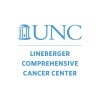
Combination of Revlimid, Melphalan and Dexamethasone as First Line Treatment for Multiple Myeloma...
Multiple MyelomaThis study is to determine whether addition of Revlimid to standard therapy will increase overall and complete response rates compared to historical standard frontline therapy and whether this combination treatment has fewer side effects than similar combination induction treatment.

G-CSF-Treated Donor Bone Marrow Transplant in Treating Patients With Hematologic Disorders
Chronic Myeloproliferative DisordersGraft Versus Host Disease6 moreRATIONALE: Giving chemotherapy drugs and total-body irradiation before a donor bone marrow transplant helps stop the growth of cancer and abnormal cells and helps stop the patient's immune system from rejecting the donor's stem cells. When the healthy stem cells from a donor are infused into the patient they may help the patient's bone marrow make stem cells, red blood cells, white blood cells, and platelets. Giving colony-stimulating factors, such as G-CSF, to the donor helps the stem cells move from the bone marrow to the blood so they can be collected and stored. PURPOSE: This clinical trial is studying how well a G-CSF-treated donor bone marrow transplant works in treating patients with hematologic cancer or noncancer.

Fludarabine, Cyclophosphamide, and Total-Body Irradiation Followed by Cyclosporine and Mycophenolate...
Chronic Myeloproliferative DisordersGraft Versus Host Disease5 moreRATIONALE: Giving low doses of chemotherapy, such as fludarabine and cyclophosphamide, and radiation therapy before a donor umbilical cord blood stem cell transplant helps stop the growth of cancer cells. It also stops the patient's immune system from rejecting the donor's stem cells. The donated stem cells may replace the patient's immune system and help destroy any remaining cancer cells (graft-versus-tumor effect). Sometimes the transplanted cells from a donor can also make an immune response against the body's normal cells. Giving cyclosporine and mycophenolate mofetil after transplant may stop this from happening. PURPOSE: This clinical trial is studying how well giving fludarabine and cyclophosphamide together with total-body irradiation followed by cyclosporine and mycophenolate mofetil works in treating patients who are undergoing a donor umbilical cord blood transplant for hematologic cancer.

Study to Determine the Maximum Tolerated Dose and Evaluate the Efficacy and Safety of CEP-18770...
Multiple MyelomaThe primary objective for part 1 of the study is to determine the maximum tolerated dose (MTD) of CEP-18770 in patients with relapsed and refractory multiple myeloma. The primary objective for part 2 is to evaluate the antitumor activity of CEP-18770 in patients treated at the MTD.

A Study of Noscapine HCl (CB3304 ) in Patients With Relapsed or Refractory Multiple Myeloma
Refractory Multiple MyelomaThis is a phase 1 study to evaluate the safety and determine maximum tolerated dose, safety & tolerability of noscapine HCl in patients with advanced multiple myeloma

Efficacy Study of CYT997 in Multiple Myeloma
Relapsed and Refractory Multiple MyelomaThis is a clinical research study that is designed to test the safety of CYT997 when given to patients with multiple myeloma and to test if CYT997 has any activity against that cancer.

Study of Multiple Myeloma Patients Relapsing or Progressing After Autologous Transplantation on...
Multiple MyelomaThis study is being done to find out if the combination of VelcadeTM with melphalan and dexamethasone (VMD) will be as effective, or even more effective as it is in combination with thalidomide and dexamethasone (VTD).

Treatment of Single or Double Umbilical Cord Trans + Graft-versus-host Disease (GVHD) Prophylaxis...
Graft Versus Host DiseaseLeukemia3 moreRATIONALE: Giving chemotherapy and total-body irradiation before a donor umbilical cord blood transplant helps stop the growth of cancer and abnormal cells and helps stop the patient's immune system from rejecting the donor's stem cells. When the healthy stem cells from a donor are infused into the patient they may help the patient's bone marrow make stem cells, red blood cells, white blood cells, and platelets. Sometimes the transplanted cells from a donor can make an immune response against the body's normal cells. Giving tacrolimus and mycophenolate mofetil before and after transplant may stop this from happening. PURPOSE: To look at the ability of umbilical cord blood cells from one or two unrelated donors to serve as a source of stem cells for people needing a bone marrow transplant.

Vorinostat, Bortezomib, and Doxorubicin Hydrochloride Liposome in Treating Patients With Relapsed...
Multiple Myeloma and Plasma Cell NeoplasmRATIONALE: Vorinostat and bortezomib may stop the growth of cancer cells by blocking some of the enzymes needed for cell growth. Bortezomib may also stop the growth of multiple myeloma by blocking blood flow to the tumor. Drugs used in chemotherapy, such as doxorubicin hydrochloride liposome, work in different ways to stop the growth of cancer cells, either by killing the cells or by stopping them from dividing. Giving doxorubicin hydrochloride liposome together with vorinostat and bortezomib may kill more cancer cells. PURPOSE: This phase I trial is studying the side effects and best dose of vorinostat and to see how well it works when given together with bortezomib and doxorubicin hydrochloride liposome in treating patients with relapsed or refractory multiple myeloma.

Study of Azacitidine to Treat Relapsed or Refractory Multiple Myeloma
Multiple MyelomaThis is a Phase II trial evaluating the overall response rate, safety and tolerability to azacitidine in patients with relapsed or refractory multiple myeloma.
